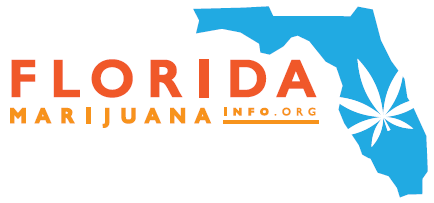Marinol: The Prescription THC Pill
Delta-9 Tetrahydrocannabinol, also known as THC and dronabinol, was first isolated from cannabis in its pure form in 1964, by Israeli scientists Raphael Mechoulam and Yechiel Gaoni, at the Weizmann Institute of Science. Delta-9 THC is the primary psychoactive compound, and one of many medicinal compounds found in cannabis. In the late 1960s, the federal government began to have the University of Mississippi grow marijuana for research purposes. This marijuana was distributed by the National Institute for Drug Abuse (NIDA) and the National Cancer Institute (NCI), supplying both the federal Compassionate Investigational Drug Program and state Controlled Substances Therapeutic Research programs. During the 1970s research at both the state and federal level tested cannabis in the form of cigarettes and also capsules containing pure delta-9 tetrahydrocannabinol. Many of these programs focused on its use in treating the effects of cancer chemotherapy and glaucoma.
Research Programs Lead to FDA Approval of THC
California’s Therapeutic Marijuana Project received the THC capsules from NIDA and NCI at no cost from 1980 through 1989. Over a million capsules, in doses of 2.5mg, 5mg, and 10mg were dispensed to patients. Other states held similar research programs, six states conducted trials comparing smoked cannabis cigarettes to oral THC in cancer patients not responding to anti-nausea and vomiting medication. The capsules contained synthetically produced delta-9 tetrahydrocannabinol. Some of the programs also researched a synthetic analog of THC, delta-8 tetrahydrocannabinol, which was said to produce less side effects.
 In 1981 the US government sold the patent for dronabinol to Unimed. Unimed applied to the FDA for approval to market Marinol as a treatment for nausea. The FDA rejected Unimed’s application on the grounds that their research was deficient. After submitting more research in 1985, the FDA and DEA gave final approval for Unimed to start marketing Marinol to treat nausea and vomiting in cancer patients, opening up access to prescription THC nationwide. It was approved in doses of 2.5mg, 5mg, and 10mg. Marinol was approved for use in treating weight loss and loss of appetite in HIV/AIDS patients in January 1991. The DEA rescheduled the specific forumlation of Marinol, delta-9 THC in sesame seed oil contained in soft gelatin capsules, from Schedule I to Schedule II. On July 2nd, 1992, Marinol was again rescheduled, from Schedule II to the less restrictive Schedule III. The FDA and DEA also approved a synthetic cannabinoid called nabilone, brand name Cesamet, in 1985, for the treatment of nausea and vomiting caused by chemotherapy. Cesamet is even stronger than Marinol and remains Schedule II.
In 1981 the US government sold the patent for dronabinol to Unimed. Unimed applied to the FDA for approval to market Marinol as a treatment for nausea. The FDA rejected Unimed’s application on the grounds that their research was deficient. After submitting more research in 1985, the FDA and DEA gave final approval for Unimed to start marketing Marinol to treat nausea and vomiting in cancer patients, opening up access to prescription THC nationwide. It was approved in doses of 2.5mg, 5mg, and 10mg. Marinol was approved for use in treating weight loss and loss of appetite in HIV/AIDS patients in January 1991. The DEA rescheduled the specific forumlation of Marinol, delta-9 THC in sesame seed oil contained in soft gelatin capsules, from Schedule I to Schedule II. On July 2nd, 1992, Marinol was again rescheduled, from Schedule II to the less restrictive Schedule III. The FDA and DEA also approved a synthetic cannabinoid called nabilone, brand name Cesamet, in 1985, for the treatment of nausea and vomiting caused by chemotherapy. Cesamet is even stronger than Marinol and remains Schedule II.
Marinol Is FDA Approved For Treating Cancer and HIV/AIDS
While Marinol is only approved for treating cancer and HIV/AIDS patients, it can also be prescribed for off-label use, to treat other medical conditions. Off-label use is when a drug is used for treating a condition the drug was not approved for, or use in an unapproved age group, unapproved dosage, or unapproved form of administration. Unfortunately, the cost of a one month supply of Marinol is significantly higher than the cost of actual cannabis. Patients also do not get the benefits of the other compounds found in cannabis, such as CBD. Patients with severe nausea and vomiting often have trouble keeping down oral medication, which is not a problem with smoked or vaporized cannabis. Still, many patients across the country and the world find benefits in Marinol.
More generic versions of Marinol are on the horizon, which could help bring down the cost. In November 2011 the DEA received petitions from four companies interested in producing a generic version of Marinol. According to the DEA, “This proposed action expands the schedule III listing to include formulations having naturally-derived dronabinol and encapsulated in hard gelatin capsules. This would have the effect of transferring the FDA-approved versions of such generic Marinol products from schedule I to schedule III.” That means the DEA could license pharmaceutical companies to grow cannabis to extract the THC for generic marinol, or the University of Mississippi could be allowed to maintain their federal monopoly on legal cannabis production in order for pharmaceutical companies. Another scenario is that pharmaceutical companies wishing to produce generic Marinol from naturally-derived THC could import from other countries. GW Pharmaceuticals currently grows marijuana in the UK.
Company Seeks FDA Approval of Cannabis Mouth Spray
Other pharmaceutical companies, such as GW Pharmaceuticals, are seeking FDA approval for Sativex, a mouth spray containing a standardized dose of dronabinol (THC) and CBD (epidolex) derived from cannabis plants. GW Pharmaceuticals is in the final stages of the FDA approval process, they are seeking approval for treating MS. They are also seeking to get Sativex approved for other uses, such as for treating cancer patients. Sativex is already approved in Canada, the UK, and parts of Europe. If Sativex receives FDA approval, it is possible cannabis could be rescheduled, but it is more likely that the Sativex formulation will be exempted from Schedule I and placed in another schedule, just as Marinol was.
While Marinol, Cesamet, and Sativex are useful medicines, they are not often prescribed and are expensive. Doctors and patients in medical cannabis states have the benefit of choosing which form of cannabis based medicine is right for them. Natural cannabis can also be an affordable alternative to pharmaceutical THC. Floridians will decide this November, with Amendment 2, if they want to have cannabis as an option for medical treatments.
For more information on Marinol go to: www.marinol.com
For more information on Cesamet go to: www.cesamet.com
For more information on Sativex go to: www.gwpharm.com













 OMD Agency
OMD Agency
Recent Comments